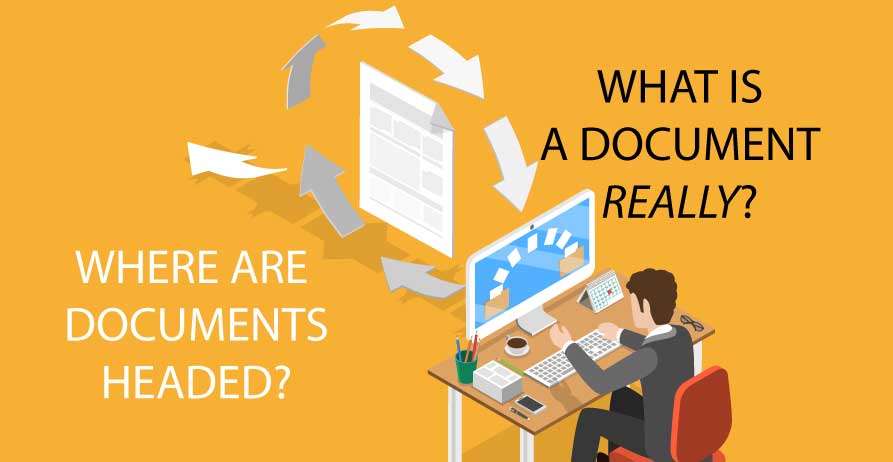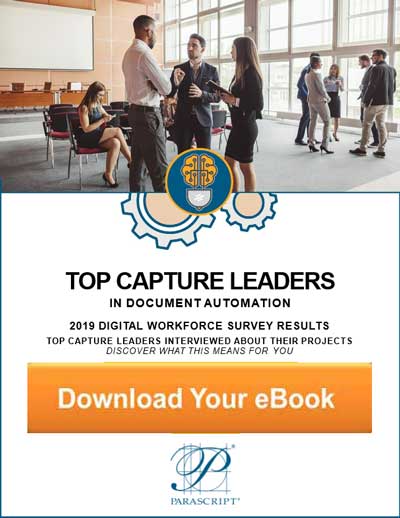What is a document really and what is its future? A very useful construct and definition of a document is provided by Joe Shepley of Doculabs in a recent article he wrote for CMSWire called, “The End of the Document? Not So Fast.” Without going into unnecessary technical details, Joe provides a simple and useful definition for a document. Namely, a document is a container for data—which is not stored in rows and columns—that can be either paper-based or electronic.
Becoming “paperless” or removing use of documents should not be an important factor, according to Joe. Rather, the real focus should be on mapping the various modalities of information that are most useful for business processes from two perspectives: gathering AND using data. In some processes, use of an app or an e-form might be the most effective means of data collection. But then in the case of a presentation, a document may or may not be needed. It all simply depends upon the use case and the end user.
Document Automation & Sophisticated Data Processing
This perspective provides a useful construct when looking to automate processes where documents are involved. If a team reviews a process and the information involved, data streams can be subdivided into different modalities. This includes how systems and users interact with this data.
If the process deals with external stakeholders where use of systems or specific requirements cannot be enforced, document-based information modalities might be most effective. This is true especially where the data cannot be structured or easily defined. Where more standardization is involved, initial data collection might come from both e-forms and traditional forms that are then converted into easy-to-maintain and control digital documents for further processing.
A document is a container for data—which is not stored in rows and columns—that can be either paper-based or electronic.
Use of documents in any scenario does not mean the resulting automation cannot involve sophisticated data processing. If supplied by the ultimate recipient of the information, digital documents (such as PDF or Word files) can include built-in validation of information. They even support form-based information. Where there is no control, simply expanding acceptable input formats to digitally-born documents (inclusive of email) can significantly speed-up processes. These would normally involve time-consuming and insufficient OCR-based processes.
Ultimately, exchange of information—and the methods of doing so—should be based upon the objectives and needs of specific processes. Some may easily make use of structured data repositories while others require information containers such as documents.
###
If you found this article interesting, you may find this ebook useful. It provides the results of the most recent AIIM survey of 100 top capture leaders focused on document automation.





